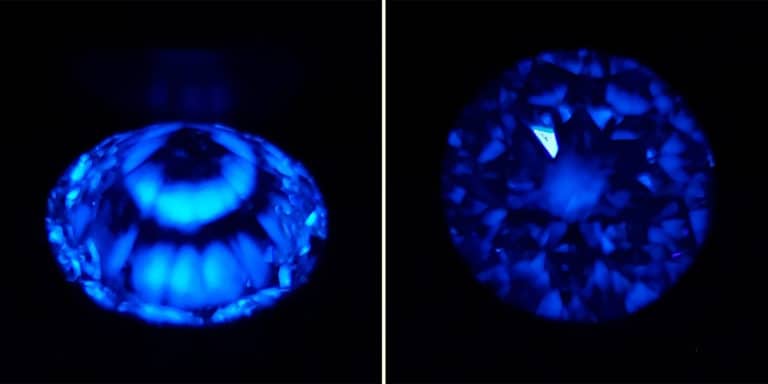AGS Laboratories Executive Director, Jason Quick, RJ, and Director of Gemological Services, Wade Abel, CG, are back for another issue of Lab Scope to share their responses to questions they receive at the Lab.
How does AGS Laboratories grade fluorescence and what is the difference from other grading labs?
We receive this question often, especially when a diamond receives a grade of Negligible and has some visible fluorescence. AGS Laboratories’ fluorescence scale is a bit different than other labs in the industry. The way we grade fluorescence is different as well.
First, let’s discuss our grading scale.
The AGS Laboratories fluorescence scale follows the AGS standards and includes the following grades: Negligible, Medium, Strong, and Very Strong. Scales used by other labs include the grades “none” and “faint.” The AGS grading scale combines “none” and “faint” in the grade Negligible. This is based on a philosophy that fluorescence in these ranges has a negligible effect on the appearance of a diamond in standard conditions. Under UV light in a darkened room, however, some fluorescence may be seen in a diamond determined Negligible.

Next, let’s discuss how we grade fluorescence.
We grade fluorescence in the face-up orientation. This means we look at the diamond with the table up, facing the sightline of the viewer. This allows the grader to see the diamond in the same orientation as the consumer, when the diamond is set in jewelry, providing an assessment of the potential impact the fluorescence may or may not have on the appearance of the diamond, face-up, in standard conditions. Other labs grade the fluorescence face-down.
Another reason for the face-up orientation is that there could be a difference in intensity based on the orientation itself. Fluorescence can be limited to specific, localized zones in the diamond. Based on the diamond’s cut and reflections within the diamond, these zones may appear to have different intensities based on the viewing orientation. We have seen diamonds that could receive a grade of medium face-down, however face-up definitely fits into the negligible category. The opposite can be true as well. Each diamond is unique and the relative location of localized fluorescence with the facets of the diamond is the reason for this.
Do you have a question for Quick and Abel? Send them an email at [email protected].

